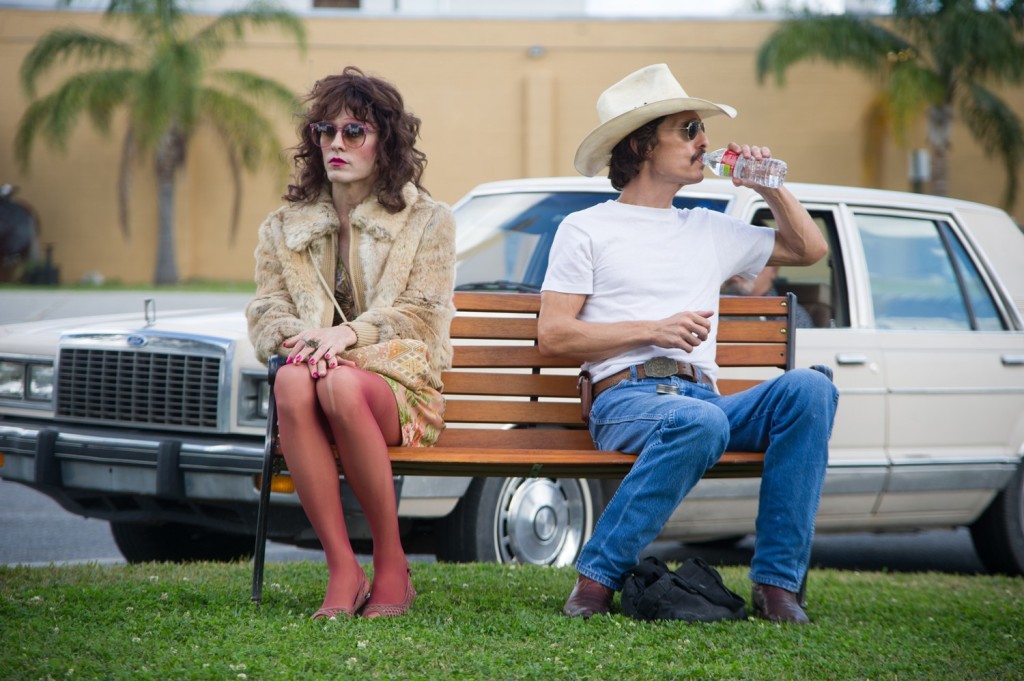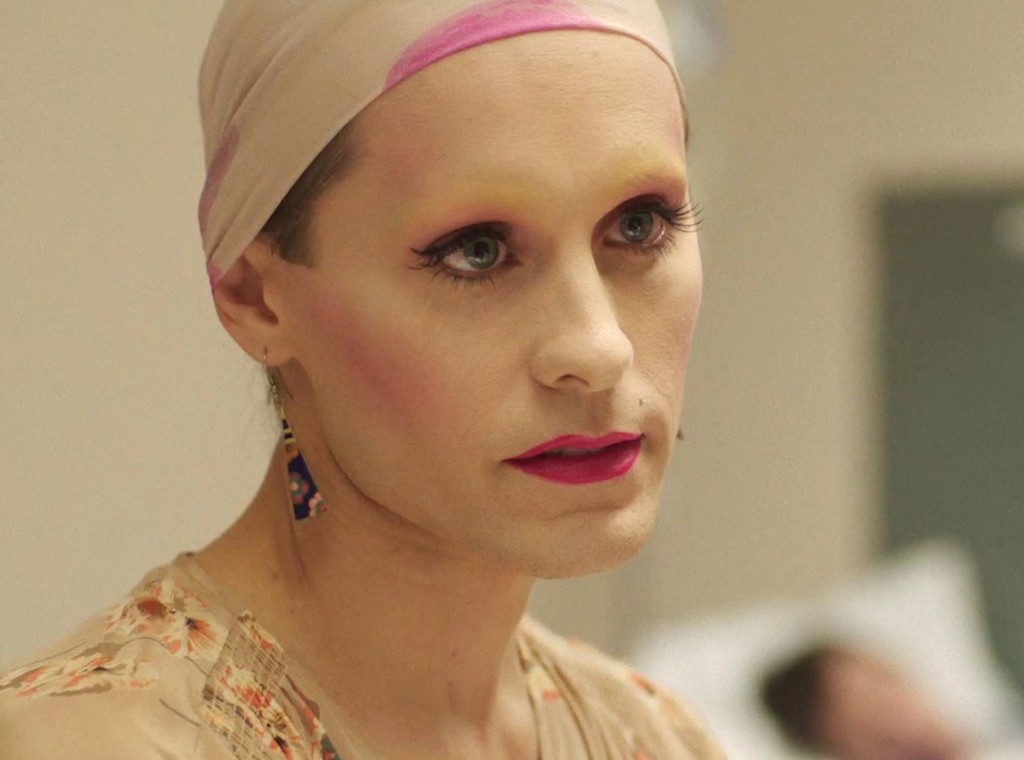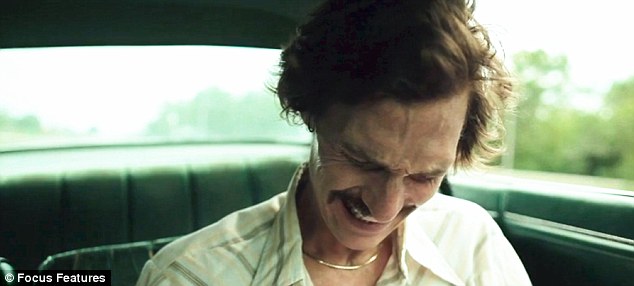For any fan of LGBTQI cinema, the past several months have seen a welcoming and prosperous surge in the release of diverse queer pictures, especially within the realm of experimental Indies and foreign art-house dramas. Usually, pickings are so slim at any given time that if queer audiences wish to see their stories projected onscreen, they just have to grin and bear their teeth at whatever titles happen to be available. Fortunately, the tides seem to be changing, for in the wake of the frenzied reception forged by Abdellatif Kechiche’s Blue is the Warmest Color there remains an elevated standard of artistic merit, technical quality, and cinematic empowerment for gay cinema. Released shortly after Blue, Jean-Marc Vallee’s Dallas Buyers Club had big shoes to fill, but fortunately it was up for the challenge. I will be the first to announce my misgivings about Hollywood and its overzealous fixation with mindless blockbusters, tropes and ensemble cast ‘seat-fillers’. But I must also give credit where credit is due, and certainly Vallee’s new film earns such respect. With its critical acclaim, electrifying performances, and candid exploration of AIDS suffering, Dallas Buyers Club offers that refreshing hybrid of mainstream accessibility and cinematic prestige. This film is no grandiose biopic laden with sterile AIDS politics and generic commentary. Rather, Matthew McConaughey and Jared Leto embrace their respective roles as homophobe and homophile with a transcendental fearlessness that allows this film to dissect the desperation of those afflicted—all the while exposing the fallacies of homophobia and disease stigmatization.
Based on a true story, Dallas Buyers Club opens in 1985 and centers on working-class Texan Ron Woodroof (McConaughey), a serial homophobic redneck and drug addict who recently discovers he is HIV+ (contracting the disease through an infected drug needle). Given a 30-day prognosis and told that AZT is the only drug that can stabilize his condition, Woodroof sets out to steal the stuff but soon learns of its true detrimental side effects. Dedicating himself to traveling the world in search of more promising treatments not yet approved by the FDA, Woodroof establishes the Dallas Buyers Club: an underground network whose members—usually gay men with HIV or full blown AIDS—pay Woodroof for access to the pharmaceuticals that could prolong their lives (in fact Woodroof himself lived six more years because of these alternative treatments). Along the way, he meets hospital roommate Rayon (Ray for short), a charismatic transgender male who refuses to allow the disease to break his spirit*.
Ron initially recoils from Rayon upon meeting her, but Ray’s compassion, charm and zest soon have Ron questioning his homophobic outlook. It isn’t long before the two become business partners; developing a kindred understanding fueled by their mutual suffering, desire for acceptance and determination to survive. Because Dallas’ conflict is presented early on and in a straightforward manner, the narrative doesn’t really invite any plot twists. Instead, the film truly relies on character development and the shifting dynamics between Ron and Ray to drive its tension. With plot elements reminiscent of American History X meets Erin Brockovich meets Philadelphia, Woodroof’s uplifting journey from reckless, self-destructive homophobe to maverick crusader and unlikely hero could have easily become a predictable melodrama fit for a Lifetime movie. Yet what makes Dallas’ story so bold, persuasive and consuming is the magnetic and novel chemistry shared between the central characters—never has a handshake been so profound and emotionally charged.
Dropping nearly forty pounds for his role, McConaughey’s emaciated appearance is yet another element that contributes to Dallas’ artistic payoff: not to mention how this role marks a startling transition from shirtless rom-com pretty boy to method actor. With a gaunt stature and ghostly pallor, McConaughey offers a rare vulnerability that beautifully embraces the blurry line between art and reality intrinsic to method technique. However, it is Jared Leto’s performance that commands the spotlight and seizes the intensity of Vallee’s film. Approaching his role with a delicate feminine ferocity, Leto adds an endearing vitality to Ray’s persona that parallels Leto’s own onscreen presence. Saturated with poise, humility, humor and panache; Ray is the type of person that may surrender her health but never her finesse. With effervescent confidence and respectable insight, Leto’s Ray harnesses that potent force known as charisma—the strength of which ultimately forces Ron to question his hypocrisies and ignorance.
Early in Dallas, Ron coarsely ingests the news of the first celebrity AIDS death with a callous homophobic comment. Like many Americans at the time, he seems more disturbed by the fact that a Hollywood movie star was gay rather than the emergence of a new disease that was killing millions of people. He initially dismisses his diagnosis because he’s not queer, and even insults the homosexual individuals at a meeting of HIV victims. It isn’t until his own friends paint an explicit anti-gay slur in red paint in front of his house that Ron realizes he has more in common with the community he despises than with his old friends. This incident prompts him to start taking his illness seriously, and there’s an interesting scene where he is at the public library researching the various methods of HIV transmission. I say this scene is interesting because it doesn’t allow the audience to take for granted the common knowledge that HIV is universal and in no way exclusive to homosexuals. Upon learning that nearly twenty percent of patients become infected from needles, Ron reads this information with an expression of utter disbelief: he feels betrayed by the fact that all of his preconceived notions have been shattered. There is a stylistic sequence that alternates between his face and close ups of the computer screen font: Ron’s reaction beautifully highlights his cultural isolation and lack of clarity regarding the world around him.
One of the most noticeable aspects of Dallas is how the second half of the film presents such a shift in tone from the first. For example, when we first meet Rayon, her character is essentially a stand-in for a class of people Woodroof initially abhors. It’s fascinating to track the trajectory of their dynamics, for as the two grow closer they begin to adopt an almost domestic role with respect to one another. There is a great scene where the two are at a supermarket quarreling over the artificial ingredients found in a food product, bickering in the stubborn manner that spouses often do. Moments later, Ron runs into one of his old friends. Unaware that Ron and Ray are shopping together, the man insults Ray—to which Ron boldly responds by introducing the two. The situation escalates to a physical altercation with Ron demanding that the man shake Ray’s hand. Although veiled in a thin coat of humor, the brevity of this scene is nonetheless powerful and marks the true turning point of the film.
“Personally, I’d have preferred it to just be more distinctive. Bolder. Scarier. Uglier. Queerer”. In his review of the film, critic Glenn Bunks argues that Dallas lacked a strong political agenda and would have worked better if it committed to one extreme: if it had been either “more rigid in its structure or just go wildly out on limbs and fleets of fancy” (Bunks). Bunks’ review has me playing devil’s advocate. On the one hand, I agree that the film could have taken greater stylistic risks and dedicated more time to exploring Leto’s character. However, Vallee’s film isn’t meant to be told from solely a queer perspective—but rather from an AIDS one. That’s the point. The fact that Dallas largely centers on a heterosexual man’s struggle with the disease speaks volumes: after all, isn’t that evidence of how the film refutes the ignorant belief that HIV/AIDS is only prevalent in the gay community? Contrary to Bunks’ argument, Vallee didn’t set out to make an epic on the fight against AIDS or homosexual culture in 1980s Texas—he assumes that the audience knows the big picture already. Don’t get me wrong, I do think this movie addresses LGBTQ politics- but it does so on a micro level through the portrayal of both protagonists. Not only does Leto’s character catalyze Ron’s change in perspective, but Ray herself provides the film with its most vibrant, familiar, dignified, personable, and heart wrenching moments. Leto truly masters the idiosyncrasies of a transgender male, and his character serves as a vessel of queer strength and empowerment. And furthermore, what could be “bolder” and “uglier” than the explicit anti-gay rhetoric that is so prevalent in the first half of the film? What purpose could it serve other than to provoke the viewer and demand that they confront these homophobic issues? It’s remarkable to note how Vallee contrasts the experiences of his opposing main characters; exploring their interiority with a gaze that is unapologetic yet compassionate; tender and harsh. McConaughey and Leto’s characters add that personal thread which ultimately links the politics of the film with a more intimate and relatable portrait of suffering and the resilience of the human spirit.
*Female pronouns will now be used for Ray.



